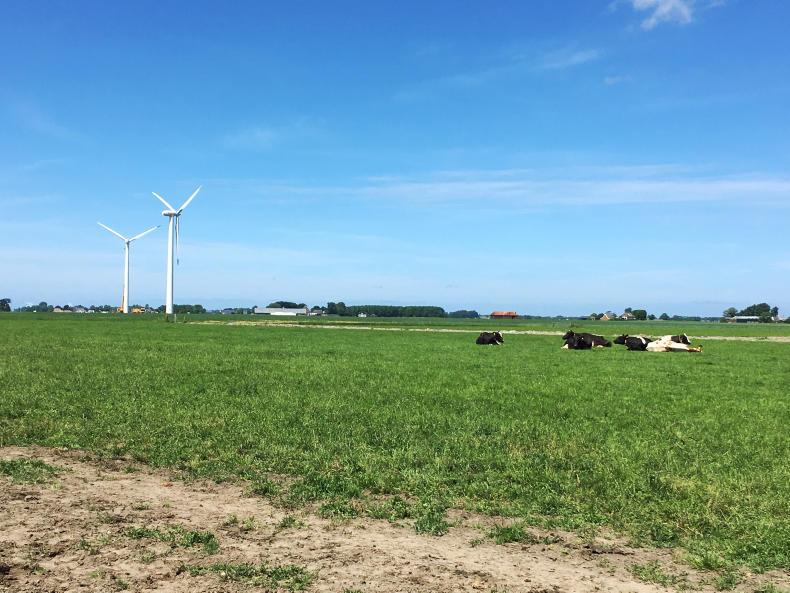Dutch cow slaughterings for the month of March stood at 64,120 head – the highest number of cows slaughtered in a month in the Netherlands since November 2001.
Cow slaughtering’s for the first three months of 2017 now stand at a cumulative 166,830 head, which is close to 52,700 head more than the same period last year and the highest level of cow slaughtering from January to March since 2000.
The increased number of cows sent for slaughtering in the Netherlands comes as no surprise as the country seeks to reduce the level of phosphate emissions from the national dairy herd by incentivising farmers to cull cows.
The Dutch government has offered farmers a €300/cow slaughter premium in a bid to remove up to 40,000 cows from the national dairy herd this year. In total, up to 180,000 head will have to be culled from the Dutch dairy herd to reduce phosphate emissions.
To limit the impact on European beef markets, the Dutch government has taken a phased approach over a number of years to incentivising cow slaughtering. Despite the significant increase in cow culling, milk production in the Netherlands (once adjusted for the extra day in February 2016) has remained flat in the opening months of 2017, as Dutch dairy farmers cull the worst performing and older cows from their herds first.
Milk supplies for April were down 0.4% to 1.2m tonnes, which is the first real sign of a drop in Dutch milk production since the end of quotas.
Futures markets
In terms of market sentiment over the last week, dairy futures markets have been steady with little activity. In New Zealand, the futures market for whole milk powder (WMP) has been flat for the last week and shown little reaction to last week’s GDT auction where WMP prices declined 3% to less than $3,145/t.
As can be seen in the graph above, July, August and September future contracts for WMP (red line) have traded flat in the last week and prices have not reacted to the 3% drop in WMP prices at the GDT (green line).
Read more
Dutch government accelerates dairy cow cull
Dairy Markets: GDT steady as butter rise continues
Dutch cow slaughterings for the month of March stood at 64,120 head – the highest number of cows slaughtered in a month in the Netherlands since November 2001.
Cow slaughtering’s for the first three months of 2017 now stand at a cumulative 166,830 head, which is close to 52,700 head more than the same period last year and the highest level of cow slaughtering from January to March since 2000.
The increased number of cows sent for slaughtering in the Netherlands comes as no surprise as the country seeks to reduce the level of phosphate emissions from the national dairy herd by incentivising farmers to cull cows.
The Dutch government has offered farmers a €300/cow slaughter premium in a bid to remove up to 40,000 cows from the national dairy herd this year. In total, up to 180,000 head will have to be culled from the Dutch dairy herd to reduce phosphate emissions.
To limit the impact on European beef markets, the Dutch government has taken a phased approach over a number of years to incentivising cow slaughtering. Despite the significant increase in cow culling, milk production in the Netherlands (once adjusted for the extra day in February 2016) has remained flat in the opening months of 2017, as Dutch dairy farmers cull the worst performing and older cows from their herds first.
Milk supplies for April were down 0.4% to 1.2m tonnes, which is the first real sign of a drop in Dutch milk production since the end of quotas.
Futures markets
In terms of market sentiment over the last week, dairy futures markets have been steady with little activity. In New Zealand, the futures market for whole milk powder (WMP) has been flat for the last week and shown little reaction to last week’s GDT auction where WMP prices declined 3% to less than $3,145/t.
As can be seen in the graph above, July, August and September future contracts for WMP (red line) have traded flat in the last week and prices have not reacted to the 3% drop in WMP prices at the GDT (green line).
Read more
Dutch government accelerates dairy cow cull
Dairy Markets: GDT steady as butter rise continues






 This is a subscriber-only article
This is a subscriber-only article










SHARING OPTIONS: